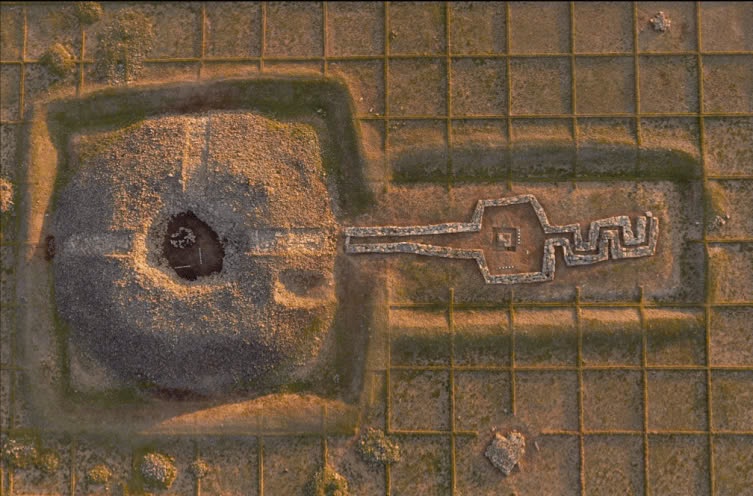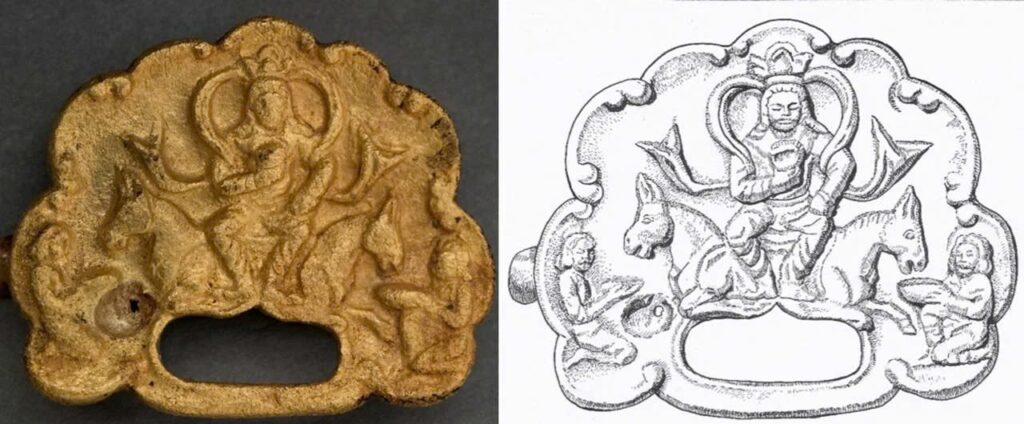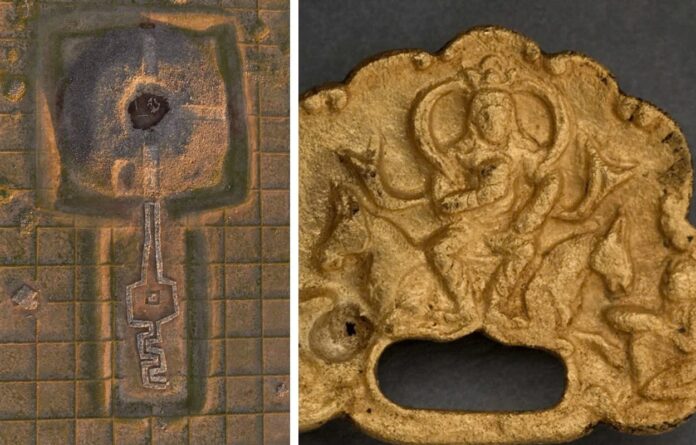Unearthing Ancient Turkish History
A Golden Belt Buckle Reveals the Face of Power

In a remarkable archaeological discovery, excavations in Kazakhstan have unearthed a social complex (Külliye) from the Western Gökturk period, yielding unprecedented artifacts that shed new light on ancient Turkish history. Among the most significant finds is a gold belt buckle bearing the first-known depiction of a Göktürk Khagan, marking a milestone in Turkish archaeological research.
The Eleke Sazy Khagan Complex: A Window to the Past

Located in the Tarbagatay district of Kazakhstan’s Eastern Kazakhstan region, the Eleke Sazy valley has revealed over 300 kurgans dating from the 9th century B.C. to the 7th century A.D. The discovery of a memorial cult complex belonging to the Western Turkic Khaganate is particularly noteworthy, as it represents the first such complex found outside of Mongolia.
Unveiling Royal Treasures
Personal Belongings of a Turkic Prince

During the 2021 excavations, archaeologists uncovered personal items belonging to a Tegin – a Turkic prince – who governed the On-Ok province on behalf of the Turkish Khagan in Suyab. These findings offer invaluable insights into the life and customs of the Göktürk elite.
The Golden Belt Buckle: A Symbol of Power

The star of the discoveries is undoubtedly the golden belt buckle depicting a Göktürk Khagan. Professor Zainolla Samashev, the lead archaeologist, describes the buckle as showing the Khagan seated on his throne, wearing a crown and holding an oath goblet. This piece not only demonstrates exquisite craftsmanship but also provides a rare glimpse into the imagery of Turkic leadership.
Decoding Ancient Symbolism
Artistic Details and Cultural Significance
Dr. Serhan Çınar’s analysis reveals that the depicted Khagan appears to be 30-35 years old with long hair, seated cross-legged in traditional Turkish style. The throne is surrounded by what are believed to be lotus flowers, a common motif in Buddhist art, hinting at the cultural influences of the time.

Dating and Ownership Theories
Professor Samashev dates the belt buckle to the late 8th century, suggesting it may have belonged to one of the known Khagans of that period or possibly was a gift from a Tudun to a ruler’s son as a symbol of authority.
Preserving the Past for the Future
The Eleke Sazy Complex: A Treasure Trove of Turkic Heritage
The excavations have revealed intricate details about the architectural layout of the memorial cult complex, including a temple, ceremonial pathway, and additional structures. A granite statue of a cross-legged Gökturk Khagan or Yabgu, now housed in the National Museum in Astana, further enriches our understanding of Turkic royal imagery.

This extraordinary discovery not only provides tangible evidence of Göktürk rule but also offers invaluable insights into the art, culture, and political structure of ancient Turkic civilizations. As researchers continue to study these artifacts, we can expect to uncover even more fascinating details about this pivotal period in Turkish history.

